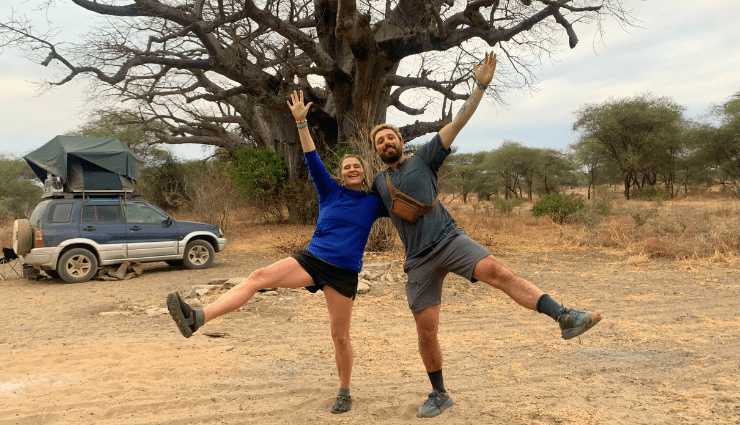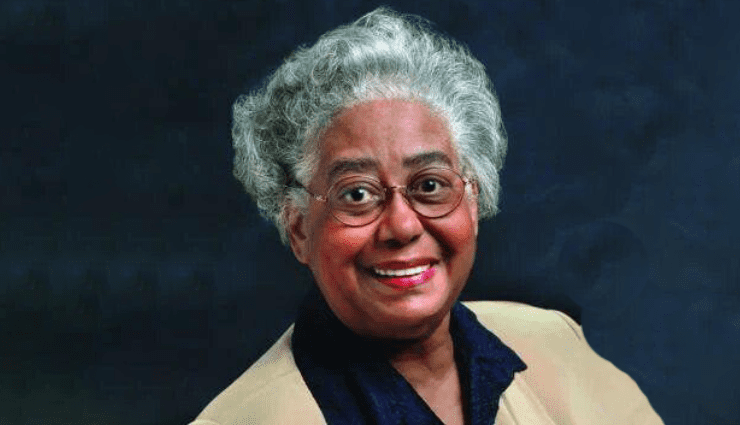New Directions in Teaching: Evolving Pedagogy and Practice at St. Paul’s School

When Michael Hirschfeld, the rector at St. Paul’s School in Concord, New Hampshire, announced his retirement in April, he sent a letter to the school community reflecting on his tenure. “Eight years ago when I entered the search process to become the school’s thirteenth rector,” he wrote, “I did so out of my heartfelt belief that I could help move the school forward by building on the best elements of its history while pushing it to look beyond itself for ideas and practices that would best serve our students. I am extremely proud of the work my colleagues and I have done in advancing this vision.”
Recently, I met up with Lawrence Smith, St. Paul’s Dean of Teaching and Learning, to talk about the school’s efforts to “look beyond itself for ideas and practices” that best serve students. This work, he says, has been at the heart of the recent ongoing professional development and pedagogical changes designed to help the school evolve with the needs of our times.
Before working at St. Paul’s School, Smith taught at Phillips Exeter Academy, also in New Hampshire, where he helped implement a formative approach to teacher development that is still going strong today. In an article in Independent School magazine a few years back, Exeter English teacher Ralph Sneeden praised the essential supportive element of the Exeter program — visiting teachers’ classrooms and talking with them about it afterward, pro to pro. “When the usual accountability checklist takes a back seat in the process — explicitly or otherwise — and observation of classes drives conversations about the nuances of teaching,” Sneeden writes, “a review can be a living professionally relevant experience, and also be just as developmental as, say, an NEH grant to study the American Revolution or a trip to see the new production of ‘Hamlet’ in London.”
This is the kind of engaging work that drives Smith. He readily admits to being an education geek — paying constant attention to the new literature, cognitive research, advances in child development, the impact of technology on learning and culture, successful programs at other schools, approaches to teaching skills, and other new developments driving school improvement nationally. He is constantly distilling this information to inform his work and the broader changes in practice and pedagogy at St. Paul’s.
“A central goal” he says, “is to help teachers develop the skills they need to engage the students in learning regardless of the discipline. As simple as this sounds, this was not a traditional approach in independent schools. We have always appreciated and relied on the handful of teachers who for whatever reason had a magical touch with students — those who get teaching intuitively. But we want all teachers to have these skills today. There are layers to it, of course. But essentially we want all our teachers to understand how and why students learn best. When they understand this, a different pedagogy of learning naturally emerges.”
In the old independent school model, schools hired smart people to teach courses in specific disciplines. The focus in the classroom was heavily weighted toward content. Some teachers were naturally better than others. Some were revered; some were not. Extracurricular activities — sports, chapel, shared meals, dorm living, etc. — were designed to address physical and spiritual health. In this way, independent schools prepared students for top colleges and universities and, in most cases, successful professional lives.
Now that the education landscape has changed — now that families have many options, from excellent public schools to charter schools to online learning, and now that information is so readily available online — independent schools have been forced to re-evaluate their value proposition. And what has emerged, in the name of 21st century education, is nothing short of a new vision of what an excellent school looks like.
“From a business perspective,” Smith says, “it makes no sense for independent schools to do things the same way they were doing 20 years ago. Because independent schools no longer have a lock on knowledge, we really needed to rethink what we can do best. We understand that the world is changing faster than it has ever changed before. And the changes are only going to get faster. If we are going preparing our students for a world we can’t even see clearly, then we have to very carefully consider not only what we teach, but also why we teach the way we teach, and how we teach what we teach.”
The search for better pedagogy has shifted the St. Paul’s faculty toward more collaboration and an openness to new ideas and programs. One example is the school’s partnership with the University of Pennsylvania Graduate School of Education. St. Paul’s is one of nine independent schools that have partnered with UPenn to create an internship program that engages young teachers in more formal learning and mentorship, at St. Paul’s and the other schools, while they are also taking graduate courses in education at UPenn.
Smith describes the program as a valuable two-way street. The interns learn from their mentors and apply what they learn in their graduate courses to their classes at St. Paul’s. For their part, St. Paul’s teachers, who are trained as mentors at UPenn, find themselves having to be far more explicit about what they do. Many of them also turn to the interns to ask what they are learning in their graduate courses — about, say, flipped classrooms and other education trends. “It has become an important and interesting give and take,” Smith says, among the faculty, interns, educators in other schools involved in the program, and UPenn itself.
At the same time, St. Paul’s is carefully creating a more consciously integrated curriculum that is linked to the mission and values of the school and to the developmental stages of the students. Part of the process is to shift the focus from the traditional notion of a content-heavy program to a more balanced program that includes academic skills and social-emotional learning.
“An increasingly central part of the process,” Smith says, “is to help each student develop a sense of self, how one learns best, how one interacts with others. The whole gamut of personal skills that serve any of us well in any circumstance.”
Smith has even begun to teach an elective course on “Metacognition: Making It Stick with Literature,” designed to help students examine how each learns best, how to develop the skills they need, as he puts it, “to become great learners.” Smith says he runs the class like an English class. They read “Make It Stick: The Science of Successful Learning,” by Peter C. Brown. Then they read three works of literature during the course of the semester — applying what they learned in “Make It Stick” to these books. This past year, they read “Boys in the Boat,” “One Thousand White Women,” and “Black Ice.” Along with discussing the books, they simultaneously discuss various cognitive approaches to learning and apply that to the study of these books. Last year, Smith taught the course in the fall. In spring, some of his enterprising students not only applied their newfound skills to their spring-term courses but also wrote about the ways in which these new skills have benefited them.
In time, Smith hopes that this class, or some variation on it, will be available to all students.
The major change at St. Paul’s, however, has been the work to define the “scope and sequence” of the curriculum at each grade level, across all disciplines, and across all aspects of school life — from the classroom to the advising program to athletics and community life.
“In the last year or so, we’ve developed a scope and sequence for our academic program,” Smith says. “The scope and sequence starts with values. These are the values that we think every St. Paul’s student should embrace. You can’t teach a value, of course, but you can teach skills associated with a value. So, for instance, if the school says it values empathy, which we do, we want to teach students how to develop perspective.”
One example of this conscious effort to instill values through skills is the school’s LinC Program, developed by Theresa Ferns, St. Paul’s Vice Rector for School Life and co-leader in integrating the school’s various curricula. “LinC” stands for “Living in Community.” This ongoing residential life program develops platforms for student interaction and trains student leaders in teaching community values, which are based on the values of the Episcopal Church. LinC has become the umbrella for all of the school’s social and residential efforts.
Smith and Ferns are also working to bring all of these programs together into a single integrated curriculum, combining the academic scope and sequence with scope and sequences that are under construction in every other area of community life here.
“We’ve got that framework done. The backbone,” Smith says. “So, in the academic program, for instance, based on that structure and core beliefs, the faculty understands the type of questions they need to ask ninth-grade students, the sort of attention span they can expect, and collectively focus on ways to connect content with these core values.”
Over the four years, student engagement with skills and values will increase in complexity so that when they graduate students should have life skills and learning skills and knowledge that can be transferred to any situation.
“When we’re done — and it’s going to take us a couple more years to get there — we’ll have one message for each grade level: This is our program across the board. This is why we do it and this is how we do it.”
This summer, Smith and Ferns are writing a booklet for the faculty on this concept of collaborative learning and teaching in every aspect of school life. More than anything, they want the faculty to understand that they are not just teachers in their own disciplines. They are, broadly speaking, St. Paul’s teachers — impacting students at every turn. “They need to know they are teaching in the classroom, when they’re coaching, when they’re driving a bus, when they’re at seated meals. Every waking minute, we are teaching our students, and they are learning from us.”
Of course, a key to this shift is ongoing internal and external professional development. The school has had a teacher review program in place for years now. It is a formative, not evaluative, program designed to help support faculty growth and improvement. With the evolving efforts at integrating school programs, however, St. Paul’s is also evolving this teacher support program, tailoring it more specifically toward integrated curriculum, working with the faculty to develop teaching goals in all areas of school life — classroom, playing fields, residential houses, co-curricular — that identify the skills and values each faculty member will teach, as well as why and how they teach them. The goal is to have all teachers develop syllabi, in effect, for everything they do, connecting their academic teaching to their coaching and advising.
All of this has also pushed the school leadership to rethink professional development for the faculty, and how best to support them. The program will be similar to the Exeter program. Teachers will write a self-reflection on why they do the things they do. Then they’ll have conversations with Smith and department heads about all of it. “I’ll do a lot of observations and share the observations with the division heads,” Smith says. “The best part of it is that the teachers will also have to spend a day at another school. In turn, they’ll invite their host to spend a day here.”
They’ll also gather feedback from each teacher’s students and advisees.
In conversation, the central question will always be on how to use this information to improve and to set goals for where one wants to be by the next evaluation. The school will also offer external professional develop opportunities to help teachers reach these new goals.
Before they go through their review process, teachers have to take part in the school’s faculty seminar. “The seminar is a 10-week long program. We meet once a week,” says Smith. “There is homework for it — watching a Prezi or video of some kind, or doing a reading. And we’ll apply whatever that topic is to the week leading up to the meeting.” The seminar starts with broad issues — say, with adolescent development — and over the 10 weeks narrows the focus down. “By the later weeks, we get down to specific classroom practices based on all the information that came before. What we’ve learned about adolescent development and pedagogy and how we measure success, etc.”
Everyone has to take part in the seminar before engaging in the review process. This means that the school has between a quarter and a third of the faculty actively involved every year. Also, everyone has to take part in at least one on-campus professional development opportunity each year. This can range from a book club to peer observation — preferably from different disciplines.
As the school continues moving toward a more integrated curriculum and the teaching of metacognitive skills, it has also hired a full-time researcher, starting this coming fall, to evaluate everything they do — what is working, what isn’t, what needs to be improved.
The process of developing a shared professional culture among teachers is at the heart of the changes at St. Paul’s — as it is at other forward-looking schools these days. To some teachers, no doubt, this may feel like an intrusion on their classroom independence. But Smith says that most of the teachers are intrigued and excited about the direction the school is going.
Smith also notes that the St. Paul’s Board of Trustees in very interested in the work — knowing it’s the best way to move the institution forward. The challenges come in finding the sweet spot between content and skills, and in keeping this conversation alive and fresh so that everyone remains engaged. But Smith thinks this process — creating the “scope and sequence” for the entire program and evolving internal and external professional development of the faculty that taps into trends in pedagogy and developments in cognitive science — will steadily move St. Paul’s in the direction of evolving excellence.
“We have to constantly grow and adapt,” Smith says. “That’s the key lesson of the 21st century.”
Michael Brosnan is an independent writer and editor with a particular interest in education and social change. His latest book of poetry, “The Sovereignty of the Accidental,” was recently published by Harbor Mountain Press. He can be reached at michaelbrosnan54@gmail.com.








